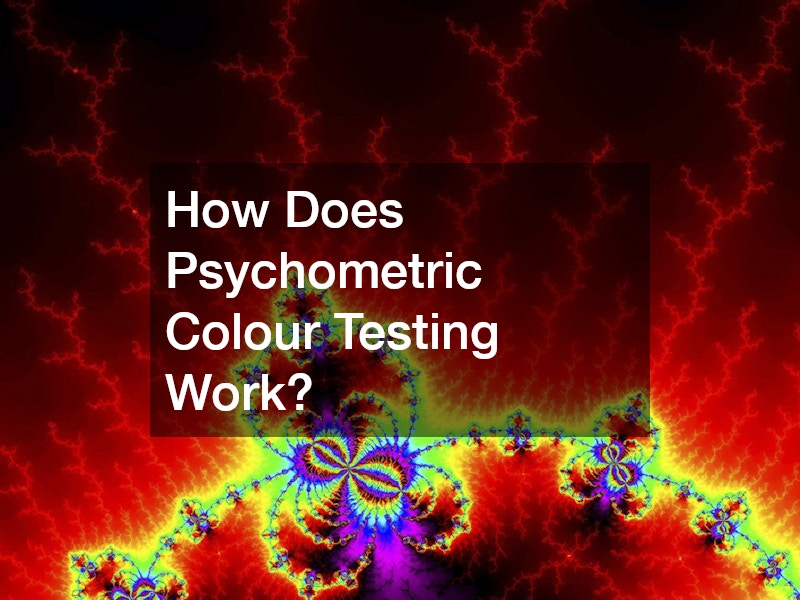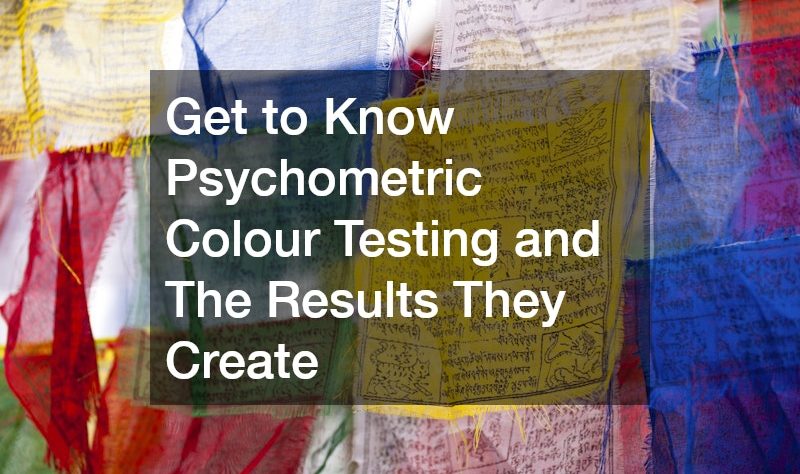
Psychometric testing has been a cornerstone in understanding human behavior, traits, and potential. Among its various applications, psychometric colour testing offers a unique and visually intuitive way to analyze personality traits and emotional responses. By associating colors with psychological attributes, this approach provides valuable insights into how individuals perceive and interact with the world around them.
In this article, we’ll delve into what psychometric colour testing is, how it works, and the results it produces, along with its applications in personal development, recruitment, and team building.
What is Psychometric Colour Testing?
Psychometric colour testing is a form of psychological assessment that uses colors to evaluate personality traits, emotional states, and decision-making tendencies. Unlike traditional psychometric tests, which often rely on numerical or verbal reasoning, color testing taps into the subconscious, offering a more intuitive approach to understanding human behavior.
The Role of Colors in Psychology
Colors have long been linked to emotional and psychological responses. For instance:
- Blue is often associated with calmness and stability.
- Red can signify passion, energy, or aggression.
- Green is linked to growth, balance, and harmony.
Psychometric colour testing builds on these associations, using specific color choices and combinations to map out an individual’s emotional and cognitive framework.
How Does Psychometric Colour Testing Work?

1. Selection Process
Participants are typically presented with a range of colors and asked to select or rank them based on their preferences. These preferences are then analyzed to reveal underlying personality traits, emotional states, or behavioral tendencies.
2. Frameworks and Methodologies
Different frameworks guide psychometric colour testing, but most rely on established psychological theories. Some use a simple color wheel, while others incorporate more complex models that assign meanings to combinations of hues, saturation levels, and brightness.
3. Subconscious Analysis
One of the key strengths of psychometric colour testing is its ability to bypass conscious biases. Color preferences often reflect deeper subconscious feelings and instincts, making this method particularly effective in uncovering hidden attributes.
The Results Produced by Psychometric Colour Testing
The results of psychometric colour testing provide a multidimensional view of an individual’s psychological profile. Key areas of insight include:
1. Personality Traits
Color preferences can reveal aspects of a person’s personality, such as:
- Introversion vs. Extraversion: Lighter, muted colors often correlate with introversion, while vibrant, bold colors suggest extraversion.
- Risk-Taking: Bright colors like red or orange may indicate a preference for dynamic and high-energy environments.
- Empathy and Sensitivity: Choices like pastel shades or greens often point to compassionate and harmonious personalities.
2. Emotional States
Colors also provide clues about current emotional states:
- Blue and green may suggest feelings of calm or contentment.
- Yellow can indicate optimism or happiness.
- Darker tones might reflect stress or introspection.
3. Behavioral Tendencies
Psychometric colour testing can predict how individuals are likely to behave in specific scenarios, such as:
- Decision-making under pressure.
- Collaboration in team settings.
- Approaches to leadership and responsibility.
Applications of Psychometric Colour Testing
Psychometric colour testing has a wide range of applications across industries and contexts. Below are some of its most impactful uses:
1. Recruitment and Hiring
Companies often incorporate psychometric colour testing into their recruitment processes to identify candidates who align with the role and organizational culture. By evaluating personality traits and emotional resilience, employers can make more informed hiring decisions.
For instance, a candidate with a preference for calming colors like blue and green might be well-suited for roles requiring steady decision-making, while someone drawn to vibrant reds and yellows might excel in dynamic, fast-paced environments.
2. Team Building
Understanding the color preferences of team members can help managers build cohesive and effective teams. By balancing different traits–such as creativity, analytical thinking, and leadership–organizations can create harmonious environments where every individual’s strengths are utilized.
Psychometric colour testing also facilitates better communication, as it highlights how team members might interpret or respond to various situations based on their psychological profiles.
3. Personal Development
For individuals, psychometric colour testing serves as a tool for self-awareness. By understanding their color preferences and associated traits, people can gain clarity on their strengths, weaknesses, and areas for growth. This insight can guide career choices, relationship decisions, and personal goals.
4. Leadership Training
Leaders can use psychometric colour testing to refine their management styles. By identifying how their color preferences align with certain leadership traits, they can adapt their approaches to motivate and inspire their teams effectively.
5. Conflict Resolution
Colors can reveal communication styles and emotional triggers, making psychometric colour testing a valuable resource in resolving workplace conflicts. For example, a preference for calming colors might indicate someone who avoids confrontation, while bolder colors could suggest a more assertive personality.
Benefits of Psychometric Colour Testing
Psychometric colour testing offers numerous benefits that set it apart from traditional assessment methods. These include:
1. Simplicity and Accessibility
The visual and intuitive nature of color-based testing makes it easy for participants to engage with, regardless of their educational or cultural background.
2. Subconscious Insights
Unlike self-reported questionnaires, psychometric colour testing taps into subconscious preferences, reducing the risk of participants skewing their responses to appear more favorable.
3. Enhanced Decision-Making
By providing clear insights into personality and behavior, color testing equips individuals and organizations with the knowledge needed to make informed decisions, whether in hiring, team building, or personal growth.
4. Improved Team Dynamics
By using psychometric colour testing, managers can ensure that teams are well-balanced, leveraging diverse strengths to achieve common goals. This contributes to creating more collaborative and productive work environments.
Challenges and Limitations of Psychometric Colour Testing
While psychometric colour testing offers many advantages, it’s essential to approach it with an understanding of its limitations:
1. Subjectivity of Color Interpretation
Cultural and individual differences can influence how people perceive and interpret colors, which may affect the accuracy of the results.
2. Overgeneralization
Relying solely on color testing may lead to oversimplified conclusions. Combining it with other psychometric tools ensures a more comprehensive evaluation.
3. Misuse in High-Stakes Decisions
Psychometric colour testing should complement–not replace–other assessment methods in high-stakes scenarios like recruitment or promotions.
The Future of Psychometric Colour Testing
As technology advances, psychometric colour testing is evolving. Artificial intelligence and machine learning are being integrated into the analysis process, offering even deeper insights and higher levels of accuracy. Additionally, virtual reality (VR) is being explored as a medium for delivering color-based assessments, creating immersive and engaging testing environments.
In the coming years, psychometric colour testing is likely to become even more widespread, finding applications in areas such as education, mental health, and consumer behavior analysis.
Psychometric colour testing is a powerful tool that blends psychology and visual perception to offer profound insights into personality, behavior, and emotional states. By analyzing color preferences, this innovative approach provides organizations and individuals with a unique perspective on their strengths, weaknesses, and potential.
Whether it’s used to enhance recruitment strategies, build cohesive teams, or foster personal growth, psychometric colour testing delivers results that go beyond surface-level analysis. As its applications continue to expand, this method will remain a valuable resource for those seeking to understand and optimize human potential.
